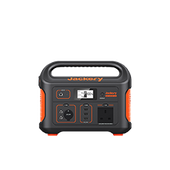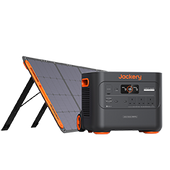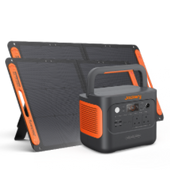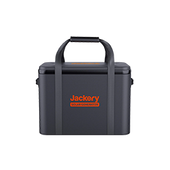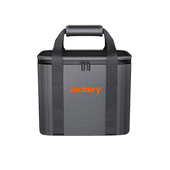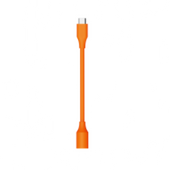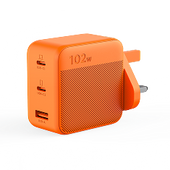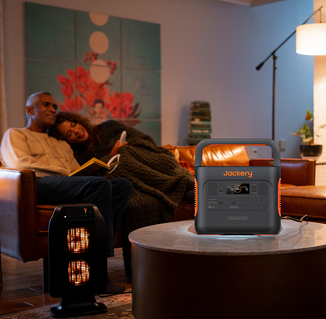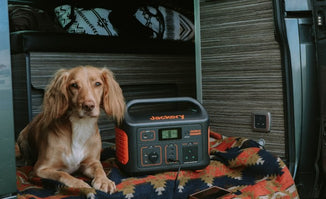DIY solar panel systems are an attractive way to generate low-cost renewable energy using cheap solar panels.
This guide will cover everything you need to know about DIY solar panels in the UK to help you decide if it is worth it. However, in most cases, a professional and experienced team is recommended to install your solar panel system to ensure effective operation and maximum efficiency.
There is an alternative way to use solar energy with a limited budget - solar generator; we recommend the Jackery Solar Generator, which combines Jackery Solar Panels with a Portable Power Station to provide unlimited and green power for your home, off-grid house or outdoor adventures.
|
Key Takeaways: |
|
Understanding the basics of solar energy when considering a DIY solar panel system is vital. DIY solar panel installation is entirely legal in the UK. The installation process is straightforward if you are installing a ground mount or purchasing a DIY solar panel kit, but it can be more challenging to install on a roof. If you think installing a solar system on your roof is challenging, maybe you should choose a Jackery Solar Generator 2000 Plus and 1000 Plus. Typically, a solar panel kit for a small home might cost less than £500. For a medium-sized home, the price rises to around £5,000; for a large building, it can double that (up to £25,000). |
DIY Solar Panels Overview
In the UK, it is vital to understand the basics of solar energy and the different components involved when considering a DIY solar panel system. DIY solar panels are available as kits containing the essential solar system installation materials.
Solar panels can power your home or other electrical appliances. They offer financial savings and energy independence. You can install DIY solar panels to meet your electricity needs at your home, business premises, outbuildings, garden office, shed, etc.
When starting a DIY solar panel project, choosing the right components will ensure your system works efficiently and meets your needs. Also, make sure that the solar inverter, solar panels, batteries, and other components match each other and your needs.
Here are the key components you need for a DIY solar panel setup:
Solar Panels: Solar panels are devices that convert sunlight into electrical energy. They come in many types, such as crystalline and thin-film solar panels.
|
Types of Solar Panels |
Details |
|
Monocrystalline Solar Panels |
These are more expensive and have higher efficiency. |
|
Polycrystalline Solar Panels |
More affordable but less efficient. |
|
Thin-film Solar Panels |
More flexible but less efficient. |
Inverter: An inverter converts the DC generated by solar panels into AC that is suitable for use by household appliances.
|
Types of Inverters |
Details |
|
String inverter |
More affordable and suitable for larger installations. |
|
Micro inverter |
More expensive but more efficient and suitable for smaller systems or installations with shading issues. |
Mounting Hardware: Choosing DIY solar panel mounting hardware that complies with UK building and safety regulations is also crucial. A sturdy frame to support the solar panel helps secure its position and angle and withstand various weather conditions.
Batteries: Solar cells can store excess electricity generated by solar panels for use when there is minimal sunlight, such as on cloudy days or at night. Additionally, batteries are optional in a DIY solar panel assembly.
Monitoring System: A monitoring system can track your electricity production and consumption, allowing you to monitor the performance of your solar panel system and adjust usage accordingly.
Is DIY Solar Panel Installation Legal in the UK?
With rising energy costs, many UK residents are considering self-reliant solar power. But is DIY solar panel installation legal in the UK?
Generally, DIY solar panel installation is perfectly legal in the UK. However, you may need to seek permission to install solar panels in the following circumstances:
- The area you live in has been designated a conservation area.
- Your property is listed as a protected building.
- You plan to make significant changes to the building, such as an extension.
So it's best to check with your local planning department in advance.
Beyond that, installing DIY solar panels entails some legal responsibilities. Firstly, you won't be able to sell your property with solar panels if an MCS-approved installer does not install them. The MCS is a quality mark indicating that the installer and solar panels meet the highest standards.
Secondly, most Smart Export Guarantee (SEG) operators (the mechanism for selling excess electricity back to the grid) will only accept your solar installation with an MCS-approved installer. Finally, you will also need to ask your home or solar panel insurance whether it will accept DIY installations, as in many cases, a condition of the cover is that an MCS professionally carries out the installation by an approved installer.

In addition, although this is a self-build project, you will also need to understand and follow the following rules like a professional installer:
- Solar panels should be installed below the highest point of the roof.
- Solar panels should be installed no higher than 20cm above the roof surface or no higher than 20cm from the wall's surface where they are installed.
- Every practical effort should be made to maintain the aesthetics of the building during the installation.
If the DIY solar panels are installed on the ground rather than on the roof, you must ensure that:
- The solar panels have little impact on the appearance of the area
- The solar panels are at least 5 meters from the edge of the property
- The solar panels are no more than 4 meters in height and 9 square meters in area.
DIY Solar Panel Installation Process in the UK
The installation process is straightforward if you are installing a ground mount or purchasing a DIY solar panel kit, but it can be more challenging to install on a roof. It is best to attempt a DIY installation if you know what you are getting into.
Aside from the numerous technical issues that can arise, installing solar panels can also be unsafe without the proper equipment, especially when installing solar panels on a roof. If you want to install your solar panels, here are the basic steps to follow:

Step 1: Check Your Property
First, you must ensure that your roof can handle a weight of 150 kg per square meter. You will also need to assess the space on your roof for mounting solar panels. Before you delve into the installation process, it is essential to find the right location based on the type of roof.
- If you plan to install solar panels on a sloping shed roof, the most important things to check are the direction (preferably facing south for maximum sunlight exposure) and angle (preferably 35 degrees from horizontal).
- If you plan to install solar panels on a flat roof, ensure the roof can handle the weight of the solar panels.
- If it is a ground-mounted structure, make sure your panels are in a sunny spot.
Step 2: Choose Your Installation Type
Before you start DIY solar panels, you must determine the type of solar panel system you want to install (grid-tied, off-grid, or hybrid). A hybrid solar system is the best option for residential use because it allows excess electricity to be stored in batteries.
Step 3: Prepare The Basic Tools
Generally, you will need some essential tools to install your DIY solar panels. These include drills, screwdrivers, wire cutters, and safety equipment such as gloves and safety glasses. Before you start the installation, make sure you have all the necessary tools.
|
Tools Needed for DIY Solar Panels |
||
|
Drill |
Gloves |
Measuring equipment |
|
Goggles |
Screwdriver |
Hard hat |
|
Wire cutters |
Safety belt |
Roof sealant |
|
Fire extinguisher |
Sturdy ladder |
Gloves |
Step 4: Set Up The Circuit
Setting up the circuit for a solar panel system is a technical task. Please take the time to set up the circuit carefully to ensure that all connections are correct and secure. Therefore, before installing the solar panels, it is highly recommended that a professional electrician handle the circuit installation.
Step 5: Install The Solar Panels
First, install the panels on the roof or in another suitable location. Then, the panels are connected to the inverter. The specific installation steps are as follows:
Mark the Roof Rafters
You need to find and mark the rafters on the roof for the roof-mounted kit. Then, you must install the metal layer supporting the array on the rafters. This step means installing sheet material as a connection point and preventing leaks.
Install the Bracket System
You need to secure the bracket rails to the support structure (usually a metal base) to which the solar panels will be attached.
Install the Inverter
Before mounting the solar panels to the brackets, you must secure the inverter to the back of each solar panel.
Mounting the Solar Panels and Inverter To the Rack
First, install the end clamps to hang the solar panels on the rails and use the grounding middle clamps to tie the solar panels and rails together. Next, install the connecting wires (which will not be usable later) before bolting the solar panels to the rack rails. And so on, installing and securing all the solar panels.
System Wiring
The inverter wires will pass through the junction box and PV disconnect switch and finally terminate at the circuit breaker box in your home to connect your system to the grid.
Electricity Meter Type
It is better to have a digital smart meter that can intelligently calculate and monitor your electricity usage.
Step 6: Test The Solar Panel System
After installation, you should contact your local company to check that your solar panels have been installed correctly. After the system is successfully installed, it needs to be tested, a challenging process usually carried out by a professional electrician.
|
Test The Solar Panel System |
Details |
|
Register Your Solar Panel System |
DIY solar panels must be registered with the distribution network operator (DNO) responsible for delivering electricity to your home. |
|
Monitor Performance |
You need to connect them to the Internet to track the system's performance and ensure it runs efficiently. |
|
Regular Maintenance |
Solar panels are simple to maintain and almost free of charge. You only need to gently clean them with a light brush once in a while (about every one or two months). |
Jackery Solar Generators Explained
If you think DIY solar panels are challenging, you may choose a solar generator with a limited budget for solar energy. Solar generators necessitate minimal maintenance due to the absence of moving components and the lack of requirements for oil changes or filter cleaning. They are portable and suitable for both indoor and outdoor use.

Jackery Solar Generators are comprised of SolarSaga Solar Panels for solar energy capture and Explorer Portable Power Stations for energy storage for further utilisation. The generator can power multiple appliances, such as refrigerators, TVs, lights, etc.
Jackery Solar Generator 2000 Plus
Jackery has introduced the Solar Generator 2000 Plus, a solid portable power solution that delivers outstanding performance. With its impressive capacity and powerful output, this device can support the operation of appliances for weeks, which is best for use indoors and outdoors.
- Expandable Powerhouse for Your Appliances: The Jackery Solar Generator 2000 Plus enables the addition of extra battery packs, increasing the capacity from 2 kWhto an impressive 12 kWh, thereby significantly improving the solar charging capabilities. This solar product has a remarkable output of 3000W, providing a 30% higher rated power than other 2 kWh solar products. Almost all necessary household appliances are powered.
- Safe to Use with ChargeShield: ChargeShield is Jackery's advanced fast charge technology, featuring 62protective mechanisms, 12 protective algorithms, and four types of physical safety protection. This technology uses a unique stepped variable-speed charging algorithm to enhance safety and extend battery pack lifespan by 50%.
- Higher Resistance & Reliability: The Explorer 2000 Plus stands out as a groundbreaking add-on battery pack that offers the convenience of recharging through solar panels. This feature increases versatility, boosts charging efficiency, and shortens charging time.

|
*Review from Our User |
|
I have been using Jackery batteries for a long time. I felt great excitement upon the release of the Explorer 2000 Plus. This marks the inaugural release of an expendable battery system by Jackery. The system supports a capacity of up to 12kWh with a 3000W 120V output or 24kWh with a 6000W 240V output - an ideal enhancement for my home backup system. |
Jackery Solar Generator 1000 Plus
Jackery Solar Generator 1000 Plus combines SolarSaga 100W solar panels with Explorer 1000 Plus. We will introduce the two components respectively. If Jackery Solar Generator 2000 Plus is for charging your appliances for a few weeks, this solar generator is for charging for several days.
- Excellent Power Output: The Explorer 1000 Plus power station boasts an excellent 1264Wh long-lasting LiFePO4 battery and a 2000W full-power pure sine wave inverter, supplying almost all required power. Adding up to three additional battery packs will remarkably increase its capacity to 5kWh.
- Expandable Powerhouse: Adding up to three extra battery packs lets Jackery's exclusive technology boost the Explorer 1000 Plus capacity from 26kWh to5kWh. Moreover, it has a maximum output of 2000W, 20% more than usual 1kWh LFP generators.
- Higher Solar Conversion Rate: The Jackery SolarSaga 100W Solar Panel boasts a solar conversion rate of up to 25%; it is optimally designed for outdoor use and unforeseen power interruptions. The solar panel weighs about 8 lbs, is lightweight, foldable, and equipped with a convenient carry handle, enhancing its portability.

|
*Review from Our User |
|
First, this item is robust and space-efficient, fitting seamlessly in my workspace (see pic). When the power goes out, it becomes a real game changer. I can continue my tasks as if everything is normal, which is quite impressive. The most advantageous aspect for me? The USB-C ports. I can connect my Mac directly to it without needing an adapter. Incredibly useful! |
The Cost of DIY Solar Panels in The UK
Overall, DIY solar panels cost less than professionally installed systems. So, how much do DIY solar panels cost in the UK? The main costs of a DIY solar panel are the cost of the kit and a few hours of your time.
The price of a DIY solar panel will vary depending on the power you need and even the orientation of your roof. DIY solar kits start at just a few hundred pounds. Typically, a solar panel kit for a small home might cost less than £500. For a medium-sized home, the price rises to around £5,000; for a large building, it can double that (up to £25,000).
Solar panel costs in the UK (supply + installation):
|
House Size |
System Size |
Number of Panels (350W) |
Estimated Costs (Including installation costs) |
|
1-2 bedroom house |
3kW panel system |
8 |
£4,500 - £5,500 |
|
2-3 bedroom house |
4kW panel system |
10 |
£5,000 - £6,000 |
|
4-5 bedroom house |
6kW panel system |
16 |
£9500 - £10,500 |
(Data Source: Greenmatch)
Solar panel installation costs in the UK:
|
System Size |
Price per Watt |
Installation cost |
Time to install |
|
3kW |
20p |
£600 |
1-3 days |
|
4kW panel system |
20p |
£800 |
1-3 days |
|
6kW panel system |
20p |
£1,200 |
1-3 days |
(Data Source: Greenmatch)
Based on the above data, DIY solar panels could save anywhere from £600 to £1,200 or more.
Grants for Solar Panels in the UK
In the UK, various grants and schemes make it more economical for homeowners to install solar panel systems. So, before embarking on a DIY solar panel project in the UK, it's essential to research and take advantage of any available grants, schemes, or funding opportunities.
Solar Panel Grant schemes provide financial assistance to eligible individuals and organisations to install solar panels, reducing the initial cost of installation.
The Smart Export Guarantee (SEG) is designed to support small-scale, low-carbon electricity generation. The SEG pays for any surplus solar electricity exported to the grid, meaning homeowners with solar panels can make money on the excess electricity they produce.
Local governments may also have specific schemes or incentives for solar panel installations. So find out in advance if any grants, subsidies or incentives are available for your area.

Are DIY Solar Panels Worth It in the UK?
Are DIY solar panels worth it for UK households? While you can only answer this question based on your circumstances, a deeper understanding of the pros and cons may help you decide whether to install solar panels.
Some people choose to install their solar panels mainly because of the benefits.
Lower Costs: You may get a cost-effective and cheaper installation, but it depends on its success. With DIY solar panels, you can avoid these installation costs.
Better Control Over the Installation Process: Another potential advantage of installing your solar system is having more control over the entire process. Although you must follow some general rules for a successful installation, you can customise your solar panel array or roof mount to your specifications and preferences.
While the advantages of DIY solar panels are attractive, it is important to weigh them against the risks involved in installing them yourself.
SEG Not Available: You may not be eligible for specific government grants for solar panels if you install them yourself. In addition, many electricity suppliers only allow the installation of MCS-certified solar panels to receive SEG benefits. As a result, you could be losing out on electricity benefits of around 5p to 24p per kilowatt-hour.
Potential Quality Issues: The installation of solar panels should be considered, as incorrect installation can significantly affect the system's efficiency level. In addition, incorrect installation can even shorten the life of solar panels and their accessories and accelerate the decline in efficiency.
In addition to the apparent advantages, DIY solar panels have several disadvantages, so you should consider their pros and cons before installing them. Please decide whether to DIY solar panels based on their pros and cons and your situation. In addition, if you still need to choose, consult the professionals responsible for the solar panel installation.
DIY Solar Panels in The UK FAQs
The following are the frequently asked questions about the DIY solar panels in the UK:
- What are the advantages of professional solar panel installation over DIY?
- Guaranteed quality of installation.
- Reduced risk.
- Eligible for Smart Export Guarantee.
- Guaranteed repairs and replacements.
- Do UK homes need to comply with additional building regulations for DIY solar panels?
Complying with UK building regulations for solar panel installations is vital, even though regulations may vary from region to region. Generally, the following rules need to be followed before undertaking a DIY solar panel installation:
Ensure your roof is strong enough to support the weight of the solar panels.
Securely mount your solar panels and other components.
Make sure cables are correctly sealed to prevent moisture from entering your structure.
The installation must meet specific requirements involving electrical installations.
- Are there any tax obligations for DIY solar panels?
You will not be liable for any tax for installing solar panels on your property. In April 2022, the UK government introduced a zero VAT policy for energy-saving materials such as solar panels installed in residential homes to encourage households to adopt renewable energy. This policy will last until March 2027.
Final Thoughts
DIY solar panels can lower your bills, reduce your carbon footprint, generate renewable electricity, and become self-sufficient. Additionally, DIY solar panel installation is entirely legal, but you must assume responsibility that should be turned over to a certified installer. Alternatively, you can choose a Jackery Solar Generator to use solar energy without professional installation and maintenance.







